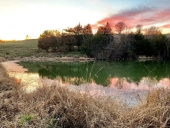








Iterations are fine, we don't have to be perfect
My 2nd Location:Florida HardinessZone:10 AHS:10 GDD:8500 Rainfall:2in/mth winter, 8in/mth summer, Soil:Sand pH8 Flat




S Bengi wrote:That is why they have animal urine(nitrogen, phosphorous) and manure(nitro+humus), those are the inputs.
The swales/keylines are already made(input) and they will last a while.
By the time they are filled, the rest of the 100 acres will also be filled with 3ft of new soil/humus too.
As long as we are not constantly stripping the soil for water and wind to erode the soil will stay fertile.
As long as we are not removing all the "pest reserve" biomass offsite the soil will remain fertile.
(we use the cow/pig/chicken/etc to remove the pest leaving manure behind)
What other inputs are you talking about. Yes there is sun and rainfall but that is already a given.
As for the next generation of trees. If one hazelnut tree makes 50 new seedlings then 30 will get killed by "fungus"
Another 15 will get eaten by animals, and 4 will die because of lighting/weather.
But 1 out of that 50 will survive which is all that is needed to keep the forest going, to replace the current one at death.
If almond orchards a perrenial crop are viable alone then a almond+mullberry+etc orchard should also be viable, without annuals.
Even a walnut "forest" grown just for lumber is viable. The key to viability is to treat it like a lumber forest plant it,
dont add inputs and harvest yearly or every 50yr, just cut down your input cost.
Savanna/meadow always have wild flowers/grasses/annuals mixed in with trees/shurbs. So it should be a part of the system.
And if we leave the annuals to self-seed and not leave the soil bare for wind and water to erode.
Use animals to clean the area while leaving behind (input) then the soil will be ok.
As for hand feeding the young animals to imprint himself as part of the pack.
I am sure that the same could be done without using annual grains, maybe chestnut flour or apples(juice) or milk bottles or mulberry leaves.
It is also pretty easy to convert more of the farm to silvo-pasture to grow more cow food.
This farm is part of the big industrial system, if it when away that would include him. this is not a small 20 acre farm we are talking 100+ acres.
 As an example we have a row of grapes in our back garden that have not been cut back in 3 seasons. The last harvest from 6 grape bushes was approximately 2 bunches so less than a pound of grapes (concord).
As an example we have a row of grapes in our back garden that have not been cut back in 3 seasons. The last harvest from 6 grape bushes was approximately 2 bunches so less than a pound of grapes (concord).




Brenda
Bloom where you are planted.
http://restfultrailsfoodforestgarden.blogspot.com/








Mark Shepard wrote:Hey Jeff...
Read the book Restoration Agriculture: http://www.forestag.com/book.html We started when we bought an annual crop farm. In the early years 100% of our income was from annuals... AS time went on and our system has matured, we have relied less and less on annuals... Out of 100 acres, we only grow 3 acres of annual cash crops now... If we weren't growing annual crops for cash-flow, we would have had to be grazing critters....
The agroforestry systems of Alleycropping and Silvopasture are described extensively in the book.. http://www.forestag.com/book.html





Paul Cereghino- Ecosystem Guild
Maritime Temperate Coniferous Rainforest - Mild Wet Winter, Dry Summer

|
The two armies met. But instead of battle, they decided to eat some pie and contemplate this tiny ad:
Play Your Way to a Sustainable Lifestyle: Uncover Permaculture Principles with Each Card
https://gardener-gift.com/
|





